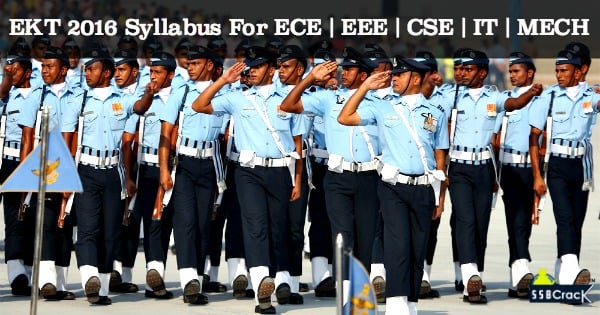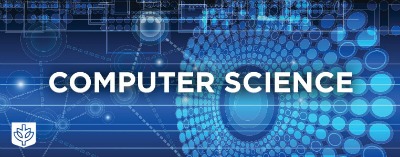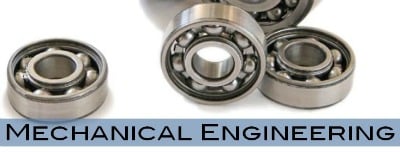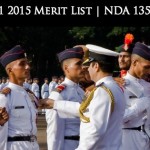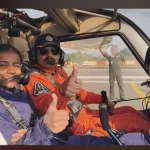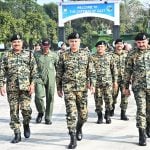EKT 2018 Syllabus For ECE | EEE | CSE | IT | MECH
EKT SYLLABUS FOR COMPUTER SCIENCE ENGINEERING
Fundamental Engineering
1. Engineering Mathematics: Matrix Algebra, Eigen values and Eigen vectors, Theorems of integral calculus, Partial derivatives, Maxima and minima, Multiple integrals, Stokes, Gauss and Green’s theorems. First order differential equation (linear and nonlinear), Cauchy’s and Euler’s equations, Complex variables, Taylor’s and Laurent’ series, Sampling theorems, Mean, Median, Mode and Standard deviation, Random variables, Discrete and Continuous distributions, Fourier transform, Laplace transform, Ztransform.
2. Engineering Physics: Units for measurement, Description of Motion in One, Two and Three dimensions, Laws of Motion, Work, Energy and Power, Rotational Motion, Gravitation, Heat and Thermodynamics, Electrostatics, Electric Current, Magnetic Effect of Currents, Magnetism, Electromagnetic Induction and Alternating Currents and Electromagnetic Waves, Ray Optics and Optical Instruments.
3. Engineering Drawing: Projection of straight line, planes and solids, Intersection of surfaces, Isometric Projection, Sectional Views of solids, Full section, Introduction to Computer-Aided Drafting.
Specialisation Branch Topics
4. Analog and Digital Electronics: Characteristics of diodes, BJT, FET, JFET and MOSFET, Amplifiers – biasing, equivalent circuit and frequency response, Oscillators and feedback amplifiers, Operational amplifiers – characteristics and applications, Simple active filters, VCOs and timers, Combinational and sequential logic circuits, Multiplexer, Schmitt trigger, Multi-vibrators, Sample and hold circuits, A/D and D/A converters, 8-bit microprocessor basics, architecture, programming and interfacing.
5. Electronic Devices: Energy bands in Silicon, Intrinsic and extrinsic Silicon, Carrier transport in Silicon – diffusion current, drift current, mobility, and resistivity. Generation and recombination of carriers, p-n junction diode, Zener diode, tunnel diode, BJT, JFET, MOS capacitor, MOSFET, LED, PIN and avalanche photo diode, Basics of LASER.
6. Computer Networks: ISO/OSI stack, LAN technologies (Ethernet, Token ring), Flow and error control techniques, Congestion control, TCP/UDP and sockets, IPv4, Application layer protocols (icmp, dns, smtp, pop, ftp, http), Basic concepts of hubs, switches, gateways, and routers. Network security – basic concepts of public key and private key cryptography, digital signature, firewalls. Basic concepts of client-server computing.
7. Network Theory Design: Thevenin’s, Norton’s, Reciprocity, Superposition, Compensation, Miller’s, Tellegen’s and Maximum power transfer theorems. Impulse, step, ramp and sinusoidal response analysis of first order and second order circuits. Two port parameters and their interrelations, Application of Laplace transform and Fourier series in the context of network analysis, Network synthesis.
8. Switching Theory: Traffic definitions, Introduction to switching networks, classification of switching systems. Grade of Service and blocking probability, Basics of Circuit switching and packet switching. Network traffic load and parameters, Modelling of switching systems, Incoming traffic and service time characterisation, Blocking models and loss estimates, Delay systems – Markovian queuing model, M/M/1 model, Limited queue capacity, Multiple server, Finite sources, Queue discipline.
9. Information Technology: Operating System – Processes, threads, interprocess communication, Concurrency, Synchronization, Deadlock, CPU scheduling, Memory management and virtual memory, File systems, I/O systems, Protection and security. RDBMS – ER-model, Relational model (relational algebra, tuple calculus), Database design (integrity constraints, normal forms), Query languages (SQL), File structures (sequential files, indexing, B and B+ trees), Transactions and concurrency control. Software engineering – Information gathering, requirement and feasibility analysis, data flow diagrams, process specifications, input/output design, process life cycle, planning and managing the project, design, coding, testing, implementation, maintenance. Programming in C, Object Oriented Programming, basics of computer graphics. Allied Engineering
10. Electrical Engineering: Single phase transformer – equivalent circuit, phasor diagram, tests, regulation and efficiency, Auto-transformer, Energy conversion principles, DC machines – types, windings, generator characteristics, armature reaction and commutation; Servo and stepper motors, Synchronous machines, Generators –regulation and parallel operation.
11. Control Engineering: Application of open loop and closed loop systems, Principles of feedback, Determination of transfer function by block diagram reduction method, Time domain analysis of first and second order systems, transient and steady-state errors, damping and oscillations.
12. Telecommunication Systems: Analog communication – amplitude and angle modulation and demodulation systems, Superheterodyne receivers, signal-to-noise ratio (SNR), Fundamentals of information theory and channel capacity theorem. Digital communication systems – Pulse Code Modulation (PCM), Differential Pulse Code Modulation (DPCM), Digital modulation schemes: amplitude, phase and frequency shift keying schemes (ASK, PSK, FSK), Basics of TDMA, FDMA and CDMA. Fundamentals of mobile communication. Fundamentals of optical fibre communication.
13. Microwave Engineering: Wave guides, Klystrons, Travelling Wave Tubes, Magnetron, Introduction to microstrip lines, Microwave semiconductor devices, Monolithic microwave integrated circuits.
14. Antenna and Wave Propagation: Antenna parameters, Effective length and aperture, Gain, Beamwidth, Directivity, Radiation resistance, Efficiency, Polarization, Impedance and Directional characteristics of antenna, Reflection, refraction, interference and diffraction of radio waves. Fundamentals ground wave, space wave, sky wave and troposcatter propagation.
15. Radar Theory: Radar range equation, Frequencies of operation, Fundamentals of Moving Target Indicator (MTI), Pulse Doppler Radar, Tracking radar.
16. Instrumentation: Accuracy, precision and repeatability, Electronic instruments for measuring basic parameters, Theory of Oscilloscopes, Signal generators, Signal analysers, Characteristics and construction of transducers.
EKT SYLLABUS FOR ELECTRICAL AND ELECTRONICS ENGINEERING
Fundamental Engineering
1. Engineering Mathematics. Matrix Algebra, Eigen values and Eigen vectors, Theorems of integral calculus, Partial derivatives, Maxima and minima, Multiple integrals, Stokes, Gauss and Green’s theorems. First order differential equation (linear and nonlinear), Cauchy’s and Euler’s equations, Complex variables, Taylor’s and Laurent’ series, Sampling theorems, Mean, Median, Mode and Standard deviation, Random variables, Discrete and Continuous distributions, Fourier transform, Laplace transform, Ztransform.
2. Engineering Physics. Units for measurement, Description of Motion in One, Two and Three dimensions, Laws of Motion, Work, Energy and Power, Rotational Motion, Gravitation, Heat and Thermodynamics, Electrostatics, Electric Current, Magnetic Effect of Currents, Magnetism, Electromagnetic Induction and Alternating Currents and Electromagnetic Waves, Ray Optics and Optical Instruments.
3. Engineering Drawing. Projection of straight line, planes and solids, Intersection of surfaces, Isometric Projection, Sectional Views of solids, Full section, Introduction to Computer-Aided Drafting. Specialisation Branch Topics
4. Analog and Digital Electronics. Characteristics of diodes, BJT, FET, JFET and MOSFET, Amplifiers – biasing, equivalent circuit and frequency response, Oscillators and feedback amplifiers, Operational amplifiers – characteristics and applications, Simple active filters, VCOs and timers, Combinational and sequential logic circuits, Multiplexer, Schmitt trigger, Multi-vibrators, Sample and hold circuits, A/D and D/A converters, 8-bit microprocessor basics, architecture, programming and interfacing.
5. Electrical Engineering. Single phase transformer – equivalent circuit, phasor diagram, tests, regulation and efficiency, Three phase transformers – connections, parallel operation, Auto-transformer; Energy conversion principles, DC machines – types, windings, generator characteristics, armature reaction and commutation, starting and speed control of motors, Single phase and Three phase induction motors – principles, types, performance characteristics, starting and speed control, Starting motors, Servo and stepper motors, Synchronous machines Generators – performance, regulation and parallel operation.
6. Electronic Devices. Energy bands in Silicon, Intrinsic and extrinsic Silicon, Carrier transport in Silicon – diffusion current, drift current, mobility, and resistivity. Generation and recombination of carriers, p-n junction diode, Zener diode, tunnel diode, BJT, JFET, MOS capacitor, MOSFET, LED, PIN and avalanche photo diode, Basics of LASER. Device technology – integrated circuits fabrication process, oxidation, diffusion, ion implantation, photolithography, n-tub, p-tub and twin-tub CMOS process.
7. Control Engineering. Application of open loop and closed loop systems, Principles of feedback, Determination of transfer function by block diagram reduction method, Time domain analysis of first and second order systems, transient and steady-state errors, damping and oscillations, Routh and Nyquist techniques, Bode plots, Root loci, Lag, lead and lead-lag compensation, State space model, State transition matrix, Controllability and observability.
8. Telecommunication Systems. Random signals and noise – probability, random variables, probability density function, autocorrelation, power spectral density. Analog communication – amplitude and angle modulation and demodulation systems, spectral analysis of these operations, superheterodyne receivers, elements of hardware, realisations of analog communication systems, signal-to-noise ratio (SNR) calculations for AM and FM. Fundamentals of information theory and channel capacity theorem. Digital communication systems – Pulse Code Modulation (PCM), Differential Pulse Code Modulation (DPCM), Digital modulation schemes: amplitude, phase and frequency shift keying schemes (ASK, PSK, FSK), Matched filter receivers, Bandwidth consideration and probability of error calculations for these schemes. Basics of TDMA, FDMA and CDMA. Fundamentals of mobile communication. Fundamentals of optical fibre communication.
9. Microwave Engineering. Wave guides, Waveguide components, Klystrons, Travelling Wave Tubes, Magnetron, Microwave measurements, Introduction to microstrip lines, Microwave network analysis, Microwave semiconductor devices, Monolithic microwave integrated circuits.
10. Antenna and Wave Propagation. Antenna parameters, Radiation from a current element in free space, Reciprocity theorem, Resonant and non-resonant antenna, Effective length and aperture, gain, beamwidth, directivity, radiation resistance, efficiency, polarization, impedance and directional characteristics of antenna, antenna temperature. Phased array antenna, Mechanism of radio wave propagation, Reflection, refraction, interference and diffraction of radio waves. Theory of ground wave, space wave, sky wave and troposcatter propagation. Allied Engineering Topics
11. Instrumentation. Accuracy, precision and repeatability, Electronic instruments for measuring basic parameters, Theory of Oscilloscopes, Signal generators, Signal analysers, Characteristics and construction of transducers.
12. Computer Networks. ISO/OSI stack, LAN technologies (Ethernet, Token ring), Flow and error control techniques, Congestion control, TCP/UDP and sockets, IPv4, Application layer protocols (icmp, dns, smtp, pop, ftp, http); Basic concepts of hubs, switches, gateways, and routers.
13. Network Theory Design. Thevenin’s, Norton’s, Reciprocity, Superposition, Compensation, Miller’s, Tellegen’s and Maximum power transfer theorems. Impulse, step, ramp and sinusoidal response analysis of first order and second order circuits. Two port parameters and their interrelations, Application of Laplace transform and Fourier series in the context of network analysis, Network synthesis.
14. Switching Theory. Traffic definitions, Introduction to switching networks, classification of switching systems. Grade of Service, Basics of Circuit switching and packet switching.
15. Information Technology. Fundamentals of operating system, RDBMS terminologies, Object Oriented Programming, Basics of computer graphics. 16. Radar Theory. Radar range equation, Frequencies of operation, fundamentals of Moving Target Indicator (MTI), Pulse Doppler Radar, Tracking radar.
EKT SYLLABUS FOR MECHANICAL ENGINEERING
Fundamental Engineering
1. Engineering Mathematics. Matrix Algebra, Eigen values and Eigen vectors, Theorems of integral calculus, Partial derivatives, Maxima and minima, Multiple integrals, Stokes, Gauss and Green’s theorems. First order differential equation (linear and nonlinear), Cauchy’s and Euler’s equations, Complex variables, Taylor’s and Laurent’ series, Sampling theorems, Mean, Median, Mode and Standard deviation, Random variables, Discrete and Continuous distributions, Fourier transform, Laplace transform, Ztransform.
2. Engineering Physics. Units for measurement, Description of Motion in One, Two and Three dimensions, Laws of Motion, Work, Energy and Power, Rotational Motion, Gravitation, Heat and Thermodynamics, Electrostatics, Electric Current, Magnetic Effect of Currents, Magnetism, Electromagnetic Induction and Alternating Currents and Electromagnetic Waves, Ray Optics and Optical Instruments.
3. Engineering Graphics/ Engineering Drawing. Principles of orthographic projections, projections of points, lines, planes and solids, Section of solids, Isometric views, Auto-CAD. Specialization Branch Topics
4. Engineering Mechanics. Equations of equilibrium in space and its application; first and second moments of area; simple problems on friction; kinematics of particles for plane motion; elementary particle dynamics. Generalized Hooke’s law and its application; design problems on axial stress, shear stress and bearing stress; material properties for dynamic loading; bending shear and stresses in beams; determination of principle stresses and strains – analytical and graphical; material behaviour and design factors for dynamic load; design of circular shafts for bending and torsional load only; deflection of beam for statically determinate problems; theories of failure.
5. Thermodynamics. Basic concept of First –law and second law of Thermodynamics; concept of entropy and reversibility; availability and unavailability and irreversibility. Classification and properties of fluids; incompressible and compressible fluids flows; effect of Mach number and compressibility; continuity momentum and energy equations; normal and oblique shocks; one dimensional isentropic flow; flow or fluids in duct with frictions that transfer. Flow through fans, blowers and compressors; axial and centrifugal flow configuration; design of fans and compressors
6. Theory of Machines. Kinematic and dynamic analysis of plane mechanisms. Cams, Gears and epicyclic gear trains, flywheels, governors, balancing of rigid rotors, balancing of single and multicylinder engines, linear vibration analysis of mechanical systems (single degree of freedom), Critical speeds and whirling of shafts. flywheels, balancing of rotors and reciprocating machinery, balancing machines, governors, free and forced vibration of damped and undamped single degree of freedom systems, isolation, whirling of shafts, gyroscope.
7. Fluid mechanics/Hydraulic Machines. Fluid flow concepts – Transport theorem – Fluid kinematics – Potential flow – Governing equations of Fluid flow – Dimensional Analysis – Viscous flow – Boundary Layer flows – Turbulence – Closed conduit flows – Hydrodynamic lubrication – Free surface flow – Compressible flows, Hydraulic Turbines: Impulse and Reaction Turbines – Centrifugal and Axial flow pumps.
8. Manufacturing Science. Foundry Technology, Melting furnaces, Special casting processes, Gating and riser design, Casting defects, Arc welding, TIG, MIG, submerged arc, resistance welding, Gas welding, Flash butt welding, Solid state welding, Welding metallurgy, Forming Technology, Powder metallurgy.
9. Materials Science. Basic concepts on structure of solids; common ferrous and non-ferrous materials and their applications; heat-treatment of steels; non-metalsplastics, ceramics, composite materials and nano-materials.
10. Machine Drawing. Development and Intersection of surfaces, Conventional representation of machine elements, materials, surface finish and tolerances – Sectional views and additional views – Drawing of Screw threads, locking devices, Fasteners, Keys and Cotters, Knuckle joints, Riveted Joints, Shaft Couplings and Bearings – Pipe Joints, Assembly and production drawings. Allied Engineering
11. Automotive Engineering. Introduction, power plant, fuel system, electrical system and other electrical fittings, lubricating system and cooling systems, chassis and transmission, axles, clutches, propeller shafts and differential, Condition for correct steering, steering gear mechanisms, automotive air conditioning, Tyres, effect of working parameters on knocking, reduction of knocking; Forms of combustion chamber for SI and CI engines; rating of fuels; additives; emission.
12. Power Plant Engineering. Steam power plant, steam boilers, steam condensers, cooling towers, cogeneration and combined cycles, nuclear power plants, hydroelectric power plants, power plant economics.
13. Industrial Engineering. System design: factory location- simple OR models; plant layout – methods based; applications of engineering economic analysis and breakeven analysis for product selection, process selection and capacity planning; predetermined time standards. System planning; forecasting methods based on regression and decomposition, design and balancing of multi model and stochastic assembly lines; inventory management – probabilistic inventory models for order time and order quantity determination; JIT systems; strategic sourcing; managing inter plant logistics.
14. Flight Mechanics. Atmosphere: Properties, standard atmosphere. Classification of aircraft. Airplane (fixed wing aircraft) configuration and various parts. Airplane performance: Pressure altitude; equivalent, calibrated, indicated air speeds; Primary flight instruments: Altimeter, ASI, VSI, Turn-bank indicator. Drag polar; takeoff and landing; steady climb & descent,-absolute and service ceiling; cruise, cruise climb, endurance or loiter; load factor, turning flight, V-n diagram; Winds: head, tail & cross winds. Static stability: Angle of attack, sideslip; roll, pitch & yaw controls; longitudinal stick fixed & free stability, horizontal tail position and size; directional stability
15. Aircraft Structures. Stress and Strain: Equations of equilibrium, constitutive law, strain-displacement relationship, compatibility equations, plane stress and strain, Airy’s stress function. Flight Vehicle Structures: Characteristics of aircraft structures and materials, torsion, bending and flexural shear. Flexural shear flow in thinwalled sections. Buckling. Failure theories. Loads on aircraft. Structural Dynamics: Free and forced vibration of discrete systems. Damping and resonance. Dynamics of continuous systems.
16. Aerodynamics. Basic Fluid Mechanics: Incompressible irrotational flow, Helmholtz and Kelvin theorem, singularities and superposition, viscous flows, boundary layer on a flat plate. Airfoils and wings: Classification of airfoils, aerodynamic characteristics, high lift devices, Kutta Joukowski theorem; lift generation; thin airfoil theory; wing theory; induced drag; qualitative treatment of low aspect ratio wings. Viscous Flows: Flow separation, introduction to turbulence, transition, structure of a turbulent boundary layer. Compressible Flows: Dynamics and Thermodynamics of I-D flow, isentropic flow, normal shock, oblique shock.

